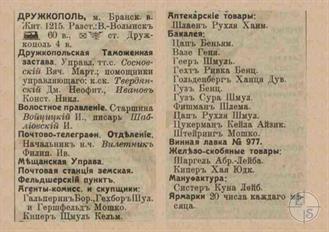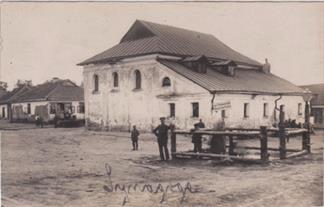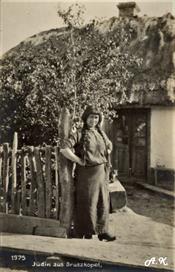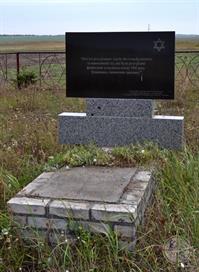Zhuravnyky (Druzhkopol)
Lutsk district, Volyn region
Sources:
- Pinkas Hakehillot Polin: Encyclopedia of Jewish Communities, Poland, Volume 5, published by Yad Vashem, Jerusalem. Translated from Yiddish by Bina Adiri, JewishGen, Inc.
- The All South-Western Territory: reference and address book of the Kyiv, Podolsk and Volyn provinces. Printing house L.M. Fish and P.E. Wolfson, 1913;
- Russian Jewish encyclopedia
Photo:
- European Jewish Cemeteries Initiative. Zhuravnyky Jewish Cemetery;
- Druzhkopol synagogue, cemetery and local Jewish girl. Published by Andriy Klenk;
- Viacheslav Galievskyi, wikipedia. Monument to the Jews of the town and surrounding villages Druzhkopil
- Tomek Wisniewski. Wooden Tombstones from Jewish Cemeteries in Eastern Europe
- Pinkas Hakehillot Polin: Encyclopedia of Jewish Communities, Poland, Volume 5, published by Yad Vashem, Jerusalem. Translated from Yiddish by Bina Adiri, JewishGen, Inc.
- The All South-Western Territory: reference and address book of the Kyiv, Podolsk and Volyn provinces. Printing house L.M. Fish and P.E. Wolfson, 1913;
- Russian Jewish encyclopedia
Photo:
- European Jewish Cemeteries Initiative. Zhuravnyky Jewish Cemetery;
- Druzhkopol synagogue, cemetery and local Jewish girl. Published by Andriy Klenk;
- Viacheslav Galievskyi, wikipedia. Monument to the Jews of the town and surrounding villages Druzhkopil
- Tomek Wisniewski. Wooden Tombstones from Jewish Cemeteries in Eastern Europe
Founded in 1570. From 1793 - as part of the Russian Empire. In the 19th-beginning of the 20th century-the settlement of Druzhkopol Vladimir-Volynsky district of the Volyn province.
In 1700, about 70 Jews lived in Druzhkopol,
in 1790 - 269,
in 1847 - 611,
in 1897 - 870 (64.9%),
In 1921 - 779 Jews (69%).
Jews lived in Druzhkopol from the mid -17th century. The main classes are small trading and sheepskin.
Most Jews were Olesk and Trisk (Turiisk) Hasids.
In 1700, about 70 Jews lived in Druzhkopol,
in 1790 - 269,
in 1847 - 611,
in 1897 - 870 (64.9%),
In 1921 - 779 Jews (69%).
Jews lived in Druzhkopol from the mid -17th century. The main classes are small trading and sheepskin.
Most Jews were Olesk and Trisk (Turiisk) Hasids.
Since 1906, the rabbi was Pinhus Weiner (1883–?), Then-Yakov-Iskhok Galaranter, in the 1920s and 1930s. - Velichker (? –1942) and Aron Entis (? –1942).
In 1918, the Jewish school was opened in Druzhkopol; In the same year, Jewish self -defense was created.
In 1920, in Druzhkopol, the pogrom detachments of the Polish army was arranged.
In 1918, the Jewish school was opened in Druzhkopol; In the same year, Jewish self -defense was created.
In 1920, in Druzhkopol, the pogrom detachments of the Polish army was arranged.
When the Jews were desperately poor, there was peace and harmony in the town. For after all, they were all equal, as if they were one family. However, when some of them began to become wealthy, that is, those who were able to provide a dowry of 40-50 guilder for their daughters that consisted of large copper coins (Zeners) placed in red bags – apparently such coins had a great value in those days – disputes and disagreements broke out. There was indeed a holy war between the Chasidim of Olesk and the Chasidim of Turisk. These disputes sprouted in the towns like mushrooms after a rain.
The large Twersky dynasty from the Turisk “court”, had on its side the wealthy man of the town, Reb Manis Lerner. The power of the Turiskers increased.
On the other side, for Olesk and Sasov the wealthy man of the town Reb Lipa Zukerman.
As the powers increased, the fire of the dispute between the two sides, the supporters of the two Chasidic courts, ignited. With all this, some sort of appeasement took place in this dispute. They were related with blood ties, and for some time, they participated together in joyous occasions. If a tragedy overtook someone, Heaven forbid, they would assist one another to the best of their abilities, literally treating each other like brothers.
The first theatrical production in the town took place on Purim – that is to say, it was a Purim play. The “actors” were workers from among the poor, and they went to perform in the houses of the wealthy.
The actors divided their earnings, and this income helped them to provide for their Passover needs.
Other groups were founded, including: “Tikun Sforim” (to repair holy books), “Chevrat Tehillim” (A group to recite Psalms), “Chevrat Mishnayot” (A group that studies Mishna together), “Ein Yaakov” (A group that studies Ein Yaakov, a compendium of the homiletic material of the Talmud), “Bikur Cholim” (A group that looks after the needs of the ill), etc. Slowly, all of these institutions took on a modern and enlightened form.
In the meantime, the dispute among the Jews of Turisk and Olesk once again broke out. A minor form of a civil war erupted. There was bloodshed and slander, news of which reached the government!
A noticeable decline began in all areas of life, including the economic realm. Anger pervaded amongst neighbors, and there was a need to set up separate Minyans (prayer quorums). One side would not eat of meat slaughtered by the other side. A halachic question that was decided by the Rabbi of Turisk was considered invalid in the eyes of the Rabbi of Olesk.
Avraham Boxer, Druzhkopol In A Period of Over 300 Years
The large Twersky dynasty from the Turisk “court”, had on its side the wealthy man of the town, Reb Manis Lerner. The power of the Turiskers increased.
On the other side, for Olesk and Sasov the wealthy man of the town Reb Lipa Zukerman.
As the powers increased, the fire of the dispute between the two sides, the supporters of the two Chasidic courts, ignited. With all this, some sort of appeasement took place in this dispute. They were related with blood ties, and for some time, they participated together in joyous occasions. If a tragedy overtook someone, Heaven forbid, they would assist one another to the best of their abilities, literally treating each other like brothers.
The first theatrical production in the town took place on Purim – that is to say, it was a Purim play. The “actors” were workers from among the poor, and they went to perform in the houses of the wealthy.
The actors divided their earnings, and this income helped them to provide for their Passover needs.
Other groups were founded, including: “Tikun Sforim” (to repair holy books), “Chevrat Tehillim” (A group to recite Psalms), “Chevrat Mishnayot” (A group that studies Mishna together), “Ein Yaakov” (A group that studies Ein Yaakov, a compendium of the homiletic material of the Talmud), “Bikur Cholim” (A group that looks after the needs of the ill), etc. Slowly, all of these institutions took on a modern and enlightened form.
In the meantime, the dispute among the Jews of Turisk and Olesk once again broke out. A minor form of a civil war erupted. There was bloodshed and slander, news of which reached the government!
A noticeable decline began in all areas of life, including the economic realm. Anger pervaded amongst neighbors, and there was a need to set up separate Minyans (prayer quorums). One side would not eat of meat slaughtered by the other side. A halachic question that was decided by the Rabbi of Turisk was considered invalid in the eyes of the Rabbi of Olesk.
Avraham Boxer, Druzhkopol In A Period of Over 300 Years
In the 18th century A wooden synagogue was built, on the site of which a new one was erected in 1865.
There is a very exciting description of the fate of the first wooden synagogue of Druzhkopol and the relationship between the parishioners of this synagogue.
There is a very exciting description of the fate of the first wooden synagogue of Druzhkopol and the relationship between the parishioners of this synagogue.
The very wealthy people in our town never succeeded in building a Beis Midrash of bricks, which would cost a great deal of money. They sufficed themselves with a wooden building. They received the wood as a present from the “poretzes”, the owners of the nearby forests. The tiles and the straw were donated by the Jewish lessees from the nearby villages. The main problem was from where to obtain the money to pay the fees of the workers.
This was at the beginning of the 18th century. A Jewish builder with the assistance of several gentile workers commenced the building at a propitious hour. The building was erected after a short period of time. All of the residents of the town celebrated the dedication of the first Beis Midrash. Druzhkopol celebrated the festive occasion for an entire week, and everyone wished each other that they should merit to witness the building of the Holy Temple, Amen!
However, the happiness and tranquility did not last long. No compromise was reached with regard to the Torah Scroll, the eastern wall, and the distribution of honors. And what to do with the tradesmen? Where would their place be? The controversy broke out with great strength.
The Turisk Chasidim established their Minyan in Yossel Reize's private house, as did the artisans. Reb Itzik Urie's, the tailor, gave over his only room, and this room turned into a synagogue on Sabbaths and festivals. Thus did the shtibels commence as separate synagogues. In addition to the Beis Midrash, two more shtibels suddenly sprouted up, that of the Chasidim of Turisk and that of the tailors.
Not only the tailors, but all other tradesmen as well, worshipped in the tailor's shtibel. The butchers realized very quickly that the separation of the tailors was not just. How could this be? They, the butchers, outnumbered the tailors, including the shoemaker, the bath attendant, and the water carrier. So why should the house of worship be called the shtibel of the tailors? Therefore, the butchers took council, and after deep beatings, they returned to the Beis Midrash, claiming “let those lowlifes be hanged along with their shtibel!”
The issue of ritual slaughter (shchita) caused a problem in all its ramifications, on account of the differences of opinion. There were butchers who were Chasidim of Turisk, and Chasidim of Olesk. The Turiskers did not want to eat meat that was slaughtered by the Oleskers. The solution was to have one more ritual slaughterer (shochet). Nobody concerned themselves with the source of livelihood with the additional shochet. Turisk sent one more shochet, so that neither would earn a livelihood, just as their “householders” do not earn a livelihood.
When there are two shochtim, of course, there must be two rabbis.
Olesk sent another rabbi to the city.
Once again, there was a fiery controversy. Opposition and disputes broke out. Someone hit someone else over the head with two candlesticks, on the Sabbath, and the blood of the Jew flowed… They recovered from their wounds, they made up, and then beat again, but this matter does not go on forever. One gets tired even of eating kreplach. It is difficult to remain in a perpetual dispute. After all, they are Jews. A day came that marked an end to all of the drawn out controversies. The town breathed a sigh of relief, and was redeemed. A new era commenced. What caused this? The first great fire!
From where did the fire come? Nobody knows, and even I don't know. The wind spread the fire from house to house. The straw roofs burned, and pillars of smoke ascended. They did not know from where to start fighting the fire. The houses were right next to each other, and one felt the heat as if in a furnace when one passed through the narrow lanes. There was no organized group of firefighters. The women and children took buckets of water from the only well in town, which was next to the slaughterhouse. The men stood on the straw roofs and tried to put out the fire with the assistance of wet sacks. However, the “brave ones” in peyos and long beards were forced to come down from the roves on account of the fire, lest they burn their beards and peyos… Thus, they abandoned the burning houses, and started to save the Torah scrolls from the Beis Midrash, which was also burning.
The dispute between the Chasidim terminated immediately after the fire. They internecine anger was forgotten. The Chasidim of Turisk went to live with the Oleskers in the few houses that were saved. “Small matters” are forgotten during a time of tribulation. The two feuding Chasidic camps grasped hands, and everything terminated in peace. The livelihood also improved. They would travel to fairs, and livelihood could be earned, with the help of G-d.
The adage was fulfilled, “After the fire, one becomes rich”.
The poretz donated wood for building. They rebuilt the town anew, more beautiful and better organized. The roofs were covered with shingles and not from straw. Even though shingles are flammable, Heaven forbid, they are much stronger.
Avraham Boxer, Druzhkopol In A Period of Over 300 Years
This was at the beginning of the 18th century. A Jewish builder with the assistance of several gentile workers commenced the building at a propitious hour. The building was erected after a short period of time. All of the residents of the town celebrated the dedication of the first Beis Midrash. Druzhkopol celebrated the festive occasion for an entire week, and everyone wished each other that they should merit to witness the building of the Holy Temple, Amen!
However, the happiness and tranquility did not last long. No compromise was reached with regard to the Torah Scroll, the eastern wall, and the distribution of honors. And what to do with the tradesmen? Where would their place be? The controversy broke out with great strength.
The Turisk Chasidim established their Minyan in Yossel Reize's private house, as did the artisans. Reb Itzik Urie's, the tailor, gave over his only room, and this room turned into a synagogue on Sabbaths and festivals. Thus did the shtibels commence as separate synagogues. In addition to the Beis Midrash, two more shtibels suddenly sprouted up, that of the Chasidim of Turisk and that of the tailors.
Not only the tailors, but all other tradesmen as well, worshipped in the tailor's shtibel. The butchers realized very quickly that the separation of the tailors was not just. How could this be? They, the butchers, outnumbered the tailors, including the shoemaker, the bath attendant, and the water carrier. So why should the house of worship be called the shtibel of the tailors? Therefore, the butchers took council, and after deep beatings, they returned to the Beis Midrash, claiming “let those lowlifes be hanged along with their shtibel!”
The issue of ritual slaughter (shchita) caused a problem in all its ramifications, on account of the differences of opinion. There were butchers who were Chasidim of Turisk, and Chasidim of Olesk. The Turiskers did not want to eat meat that was slaughtered by the Oleskers. The solution was to have one more ritual slaughterer (shochet). Nobody concerned themselves with the source of livelihood with the additional shochet. Turisk sent one more shochet, so that neither would earn a livelihood, just as their “householders” do not earn a livelihood.
When there are two shochtim, of course, there must be two rabbis.
Olesk sent another rabbi to the city.
Once again, there was a fiery controversy. Opposition and disputes broke out. Someone hit someone else over the head with two candlesticks, on the Sabbath, and the blood of the Jew flowed… They recovered from their wounds, they made up, and then beat again, but this matter does not go on forever. One gets tired even of eating kreplach. It is difficult to remain in a perpetual dispute. After all, they are Jews. A day came that marked an end to all of the drawn out controversies. The town breathed a sigh of relief, and was redeemed. A new era commenced. What caused this? The first great fire!
From where did the fire come? Nobody knows, and even I don't know. The wind spread the fire from house to house. The straw roofs burned, and pillars of smoke ascended. They did not know from where to start fighting the fire. The houses were right next to each other, and one felt the heat as if in a furnace when one passed through the narrow lanes. There was no organized group of firefighters. The women and children took buckets of water from the only well in town, which was next to the slaughterhouse. The men stood on the straw roofs and tried to put out the fire with the assistance of wet sacks. However, the “brave ones” in peyos and long beards were forced to come down from the roves on account of the fire, lest they burn their beards and peyos… Thus, they abandoned the burning houses, and started to save the Torah scrolls from the Beis Midrash, which was also burning.
The dispute between the Chasidim terminated immediately after the fire. They internecine anger was forgotten. The Chasidim of Turisk went to live with the Oleskers in the few houses that were saved. “Small matters” are forgotten during a time of tribulation. The two feuding Chasidic camps grasped hands, and everything terminated in peace. The livelihood also improved. They would travel to fairs, and livelihood could be earned, with the help of G-d.
The adage was fulfilled, “After the fire, one becomes rich”.
The poretz donated wood for building. They rebuilt the town anew, more beautiful and better organized. The roofs were covered with shingles and not from straw. Even though shingles are flammable, Heaven forbid, they are much stronger.
Avraham Boxer, Druzhkopol In A Period of Over 300 Years
In a united fashion, the Jews of Druzhkopol banded together to build a Beis Midrash from red, fired bricks. Each brick had the dimension of 40 cm x 20 cm, with a thickness of 10 cm. Each wall was one Arshin in thickness (approximately ѕ of a meter). All opinions were even during the building. When they were aroused slightly, it became evident that the controversies between the Chasidic groups were once again going to break out. The Turiskers and Oleskers continued to revere the Rebbe Leizerl of Uscilug from the one side, and the Rebbe of Sasov from the other side.
And what would be with the tradesmen?
The Blessed G-d is a merciful father, and he caused an ideal thought to enter the head of Count Zargorski of Bazhany – to build a large synagogue in the town, which would save the situation…
The large synagogue would be planned to be built in a fine and rich style. There would be a “Polish” style entrance (an anteroom before the prayer hall), and two branches for the Women' Gallery. At the side of the building would be another smaller synagogue. The example was of an article of clothing with many large pockets, and one additional small pocket at one side (a bozem kaszine).
The “Bozem Kaszine”, that is to say the small synagogue, was immediately taken by the tradesmen, and it took the name “The Tailor's Small Synagogue” (Das Shneiderishe Shulechel). This was despite the fact that the number of shoemakers was greater than the number of tailors. Nevertheless, the “resonance” of the tailors was different than that of the shoemakers. Where were the water drawers, and the supervisor of the bathhouse? Perforce, it was impossible to name the synagogue after each of the trades… it was not worthwhile to start a dispute on account of this.
With regard to the task of Gabbai – a tailor could fulfill this role just as a shoemaker. However, with regard to a cantor and a Torah reader – for these a “scholarly” Jew had to be hired, who himself did not know much more than the tradesmen – but not many of the people understood the meaning of the words and the grammar. Therefore, everything worked out in this area as well…
Disputes broke out once again with regard to the distribution of the Torah honors. A shoemaker who was more honorable, a shoemaker who was less honorable, etc., so how could they give Shishi or Maftir? So to whom should they give it? It turns out that they would have to give the honor to a gentile… Indeed, the rabbi Reb Shmuel Hirsch took Revii (the fourth aliya) for himself in the Beit Midrash; however there was nobody to give this honor to amongst the tailors.
As the dispute and accusations grew, the turn came of the candlesticks that were prepared to give beatings. How could this be? It is indeed forbidden even to touch a candlestick on the Sabbath, for it is “Muktza”. However, the goal sanctifies the ends. The indiscretion of giving Revii to a tailor justifies the throwing of candlesticks on the head, even on the Sabbath.
The town barber, who also served as the physician and medic, worshipped in the small synagogue, and almost always had to bandage up the heads of those who were wounded and bruised. He would thereby earn a “Zekser” (a copper coin).
After the heads of the wounded were healed, the sides once again became appeased, and made up with each other.
The entire blame was placed on the “scholar”, the hired Torah reader. They grabbed him by his neck and kicked him out of the synagogue. The tailors and shoemakers accepted upon themselves to be the prayer leaders. The shoemaker purchased a prayer book with his final coin, and began to study to serve as a Torah reader, and the joy increased…
Avraham Boxer, Druzhkopol In A Period of Over 300 Years
And what would be with the tradesmen?
The Blessed G-d is a merciful father, and he caused an ideal thought to enter the head of Count Zargorski of Bazhany – to build a large synagogue in the town, which would save the situation…
The large synagogue would be planned to be built in a fine and rich style. There would be a “Polish” style entrance (an anteroom before the prayer hall), and two branches for the Women' Gallery. At the side of the building would be another smaller synagogue. The example was of an article of clothing with many large pockets, and one additional small pocket at one side (a bozem kaszine).
The “Bozem Kaszine”, that is to say the small synagogue, was immediately taken by the tradesmen, and it took the name “The Tailor's Small Synagogue” (Das Shneiderishe Shulechel). This was despite the fact that the number of shoemakers was greater than the number of tailors. Nevertheless, the “resonance” of the tailors was different than that of the shoemakers. Where were the water drawers, and the supervisor of the bathhouse? Perforce, it was impossible to name the synagogue after each of the trades… it was not worthwhile to start a dispute on account of this.
With regard to the task of Gabbai – a tailor could fulfill this role just as a shoemaker. However, with regard to a cantor and a Torah reader – for these a “scholarly” Jew had to be hired, who himself did not know much more than the tradesmen – but not many of the people understood the meaning of the words and the grammar. Therefore, everything worked out in this area as well…
Disputes broke out once again with regard to the distribution of the Torah honors. A shoemaker who was more honorable, a shoemaker who was less honorable, etc., so how could they give Shishi or Maftir? So to whom should they give it? It turns out that they would have to give the honor to a gentile… Indeed, the rabbi Reb Shmuel Hirsch took Revii (the fourth aliya) for himself in the Beit Midrash; however there was nobody to give this honor to amongst the tailors.
As the dispute and accusations grew, the turn came of the candlesticks that were prepared to give beatings. How could this be? It is indeed forbidden even to touch a candlestick on the Sabbath, for it is “Muktza”. However, the goal sanctifies the ends. The indiscretion of giving Revii to a tailor justifies the throwing of candlesticks on the head, even on the Sabbath.
The town barber, who also served as the physician and medic, worshipped in the small synagogue, and almost always had to bandage up the heads of those who were wounded and bruised. He would thereby earn a “Zekser” (a copper coin).
After the heads of the wounded were healed, the sides once again became appeased, and made up with each other.
The entire blame was placed on the “scholar”, the hired Torah reader. They grabbed him by his neck and kicked him out of the synagogue. The tailors and shoemakers accepted upon themselves to be the prayer leaders. The shoemaker purchased a prayer book with his final coin, and began to study to serve as a Torah reader, and the joy increased…
Avraham Boxer, Druzhkopol In A Period of Over 300 Years
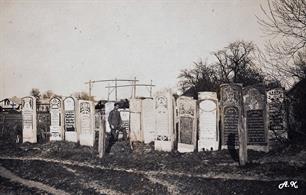 |
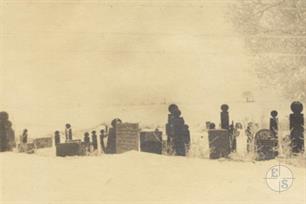 |
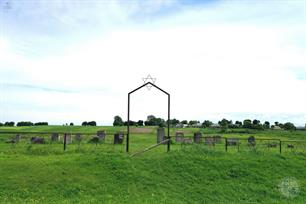 |
| Jewish cemetery, 1914-1915 | Jewish cemetery with wooden tombstones in Druzhkopol, 1916 | Jewish cemetery, 2019 |
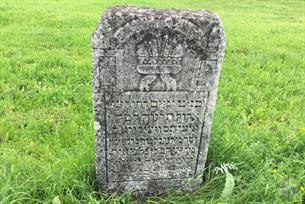 |
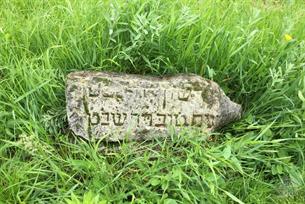 |
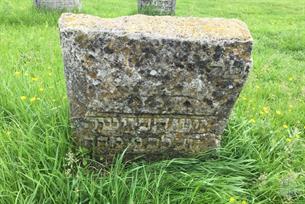 |
After the second great fire, there were good times. These were days of splendor for the town. Better planned houses were built. In the houses of the wealthy, the floors were already being made out of wood! However, tiled floors were still unknown in Druzhkopol. They would sweep out from the rooms into the kitchen. The cleanliness and order were not at a high level. I recall that the washing bucket was lost in a certain house. They looked and looked, and could not find it. After some time, it became obvious that they had to wash the floor.
Later on, it became known to the people of Druzhkopol, via Jews from Galicia, that there are already marble floors in the city of Lemberg.
In Galicia, near to our town, they already began to imitate Paris. Jewish children studied in government schools. They began to pave the roads. Kaiser Franz Josef, in his great mercy, granted equal rights to all of the citizens. In the constitution, reference was made to the Jews of Galicia.
All of this was conducive to the proper development of business, and this influenced our town as well. The Jews of Galicia, merchants of forestry products and grain, would visit our town daily and conduct business with our wealthy people. Middlemen, brokers, and expediters began to appear. The border commerce gave our town ample livelihood. Even the small-scale merchants and craftsmen earned well, and lived off the army border guard. There were also “exiceniks” (tax officials) and many other officials.
Our town even managed to have a doctor. He was Dr. Helman who hailed from Galicia. He was a dear Jew, with a warm, sensitive heart. He did not enjoy extorting money for naught. When he visited a poor sick person, rather than taking money, he would leave a sum of money for the needs of the sick person. He would say to the wife or mother of the sick person, “With this money, buy a chicken and cook it for the sick person”. “Open the window and air out the stifling room!” “Do not let him eat cholent and then he will regain his strength”. Dr. Helman was an apostate Jew.
After 25 years of medical work, he died in Druzhkopol, in the home of Reb Lipa Zukerman. After his death, Reb Lipa placed his baptismal certificate under the pillow upon which he was resting and informed the police about this. Throughout his 25 years of service as a doctor in our town, nobody knew that he had converted. Indeed, he did not go to the synagogue, but he also did not go to church.
When Reb Lipa wished to turn over the body of the doctor to the Christian church, they did not want to accept it. The Catholic church refused to bury him in their cemetery. The Jews were also, in accordance with their tradition, not able to bury him in the Jewish cemetery. The authorities were forced to become involved in the matter, and the forced the Praboslavic Church to bury him in their cemetery. Thus was the poor man buried, near the gate, without the participation of friends and relatives. Nobody eulogized him or gave him his final honors.
This event took place in 1888. For many years after the death of Dr. Helman, the residents of Druzhkopol were not able to forgive Reb Lipa for the iniquity that he had done to Dr. Helman by giving over his body to the Christians. All of the Jews felt and believed that Dr. Helman was one of those who was forced, and did not covert his religion out of free will, but rather to be accepted to medical school and to be able to receive the degree of doctor – a matter which was very difficult if not impossible for a Jew in that era. After Dr. Helman, there was no doctor in the town for about 60 years. There was only a government medic. Nevertheless, this fact did not prevent the town from developing and flourishing.
Avraham Boxer, Druzhkopol In A Period of Over 300 Years
Later on, it became known to the people of Druzhkopol, via Jews from Galicia, that there are already marble floors in the city of Lemberg.
In Galicia, near to our town, they already began to imitate Paris. Jewish children studied in government schools. They began to pave the roads. Kaiser Franz Josef, in his great mercy, granted equal rights to all of the citizens. In the constitution, reference was made to the Jews of Galicia.
All of this was conducive to the proper development of business, and this influenced our town as well. The Jews of Galicia, merchants of forestry products and grain, would visit our town daily and conduct business with our wealthy people. Middlemen, brokers, and expediters began to appear. The border commerce gave our town ample livelihood. Even the small-scale merchants and craftsmen earned well, and lived off the army border guard. There were also “exiceniks” (tax officials) and many other officials.
Our town even managed to have a doctor. He was Dr. Helman who hailed from Galicia. He was a dear Jew, with a warm, sensitive heart. He did not enjoy extorting money for naught. When he visited a poor sick person, rather than taking money, he would leave a sum of money for the needs of the sick person. He would say to the wife or mother of the sick person, “With this money, buy a chicken and cook it for the sick person”. “Open the window and air out the stifling room!” “Do not let him eat cholent and then he will regain his strength”. Dr. Helman was an apostate Jew.
After 25 years of medical work, he died in Druzhkopol, in the home of Reb Lipa Zukerman. After his death, Reb Lipa placed his baptismal certificate under the pillow upon which he was resting and informed the police about this. Throughout his 25 years of service as a doctor in our town, nobody knew that he had converted. Indeed, he did not go to the synagogue, but he also did not go to church.
When Reb Lipa wished to turn over the body of the doctor to the Christian church, they did not want to accept it. The Catholic church refused to bury him in their cemetery. The Jews were also, in accordance with their tradition, not able to bury him in the Jewish cemetery. The authorities were forced to become involved in the matter, and the forced the Praboslavic Church to bury him in their cemetery. Thus was the poor man buried, near the gate, without the participation of friends and relatives. Nobody eulogized him or gave him his final honors.
This event took place in 1888. For many years after the death of Dr. Helman, the residents of Druzhkopol were not able to forgive Reb Lipa for the iniquity that he had done to Dr. Helman by giving over his body to the Christians. All of the Jews felt and believed that Dr. Helman was one of those who was forced, and did not covert his religion out of free will, but rather to be accepted to medical school and to be able to receive the degree of doctor – a matter which was very difficult if not impossible for a Jew in that era. After Dr. Helman, there was no doctor in the town for about 60 years. There was only a government medic. Nevertheless, this fact did not prevent the town from developing and flourishing.
Avraham Boxer, Druzhkopol In A Period of Over 300 Years
The Wehrmacht troops occupied the settlement on June 22, 1941. On July 10, Judenrat was created.
In early October 1941, Jews were deported to the ghetto in Gorokhov.
September 4, 1942 in Druzhkopol was shot approx. 500 Jews.
In early October 1941, Jews were deported to the ghetto in Gorokhov.
September 4, 1942 in Druzhkopol was shot approx. 500 Jews.

- Home
- Shtetls
- Vinnytsia region
- Volyn region
- Dnipro region
- Donetsk region
- Zhytomyr region
- Zakarpattia region
- Zaporizhzhia region
- Ivano-Frankivsk region
- Kyiv region
- Kropyvnytskyi region
- Luhansk region
- Lviv region
- Mykolayiv region
- Odessa region
- Poltava region
- Rivne region
- Sumy region
- Ternopil region
- Kharkiv region
- Kherson region
- Khmelnytskyi region
- Chernihiv region
- Chernivtsi region
- Cherkasy region
- Crimea
- Synagogues
- Cemeteries
- Objects & guides
- Old photos
- History
- Contact
Jewish towns of Ukraine
My shtetl
My shtetl
Donate
Jewish towns of Ukraine
